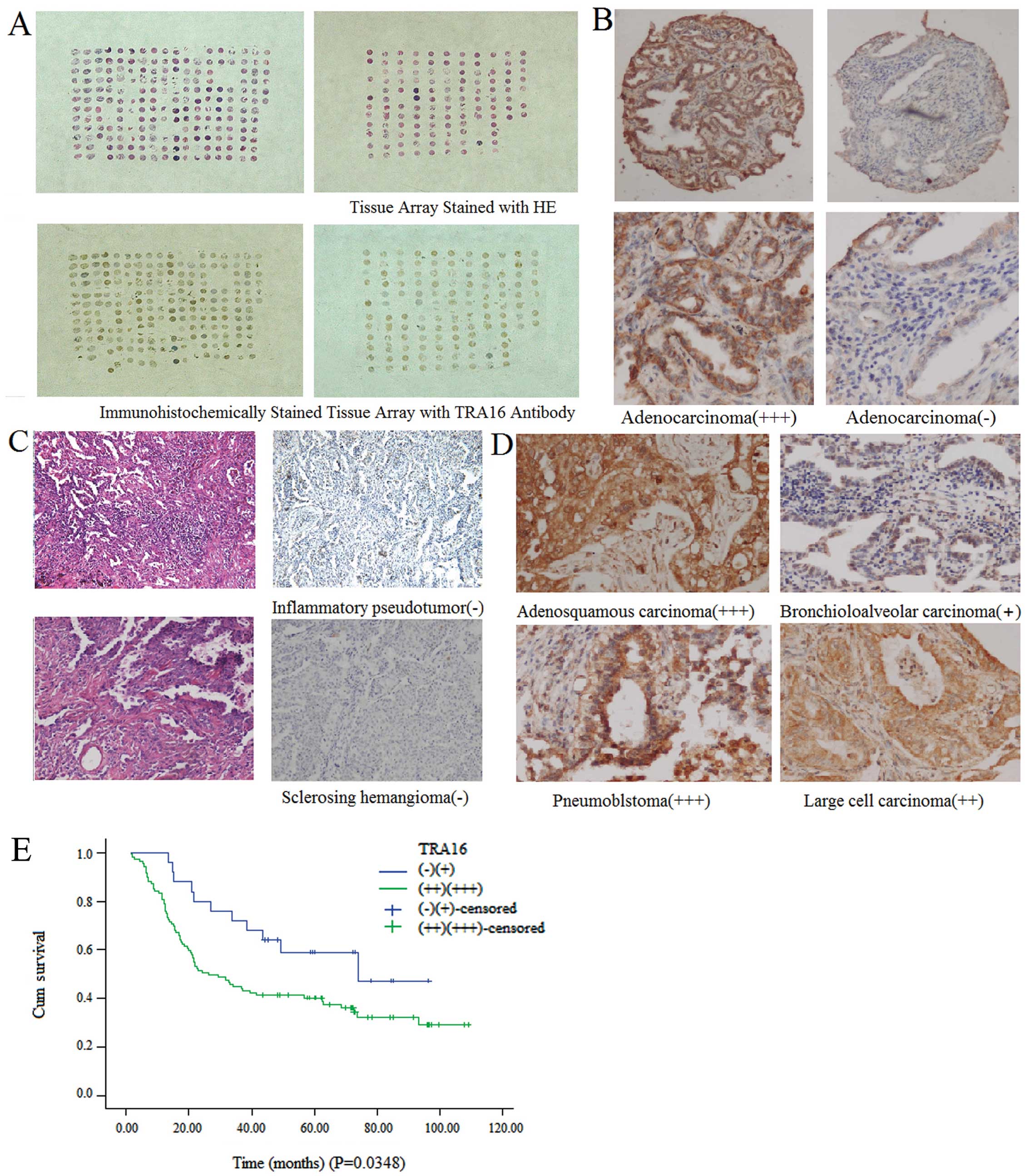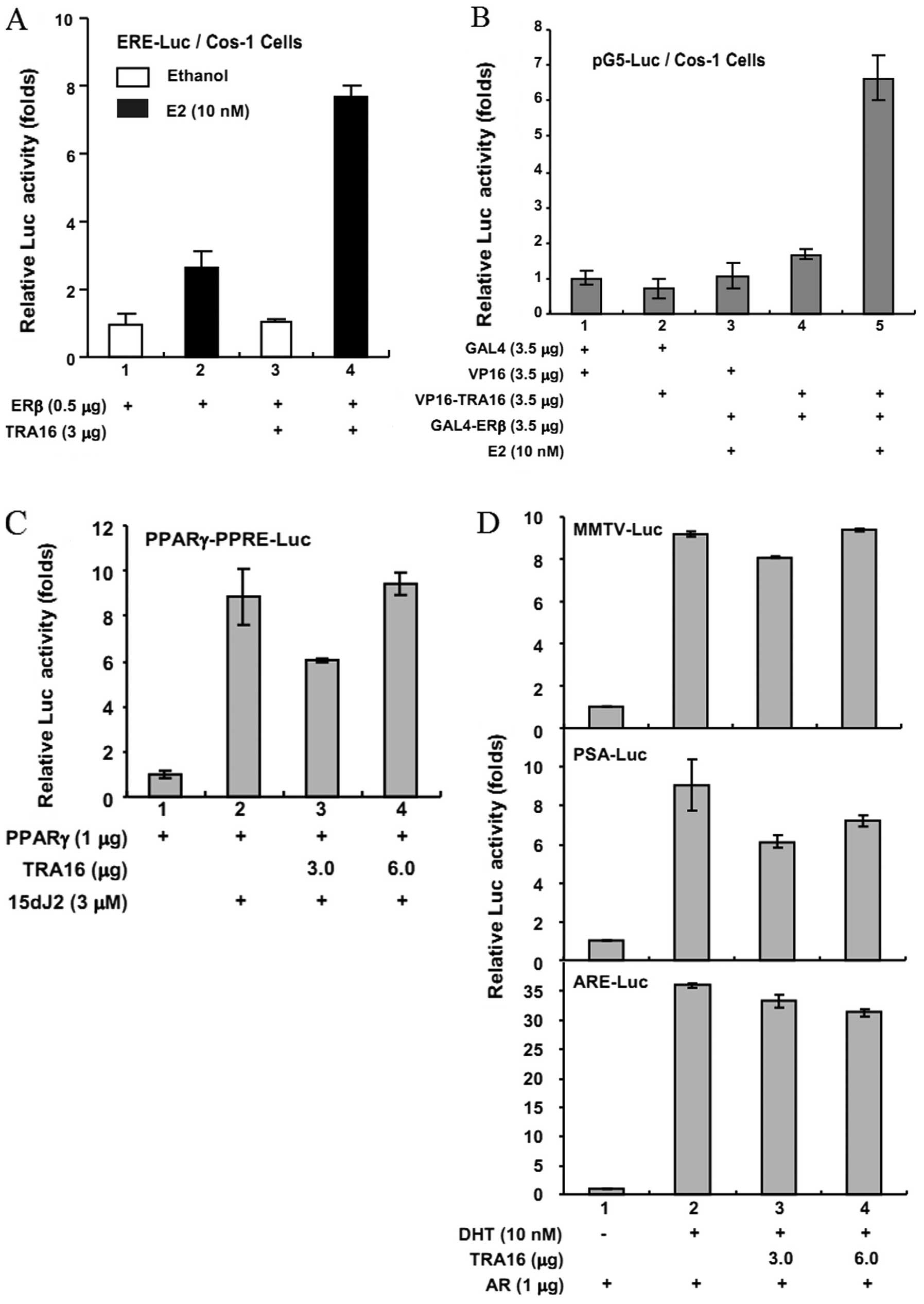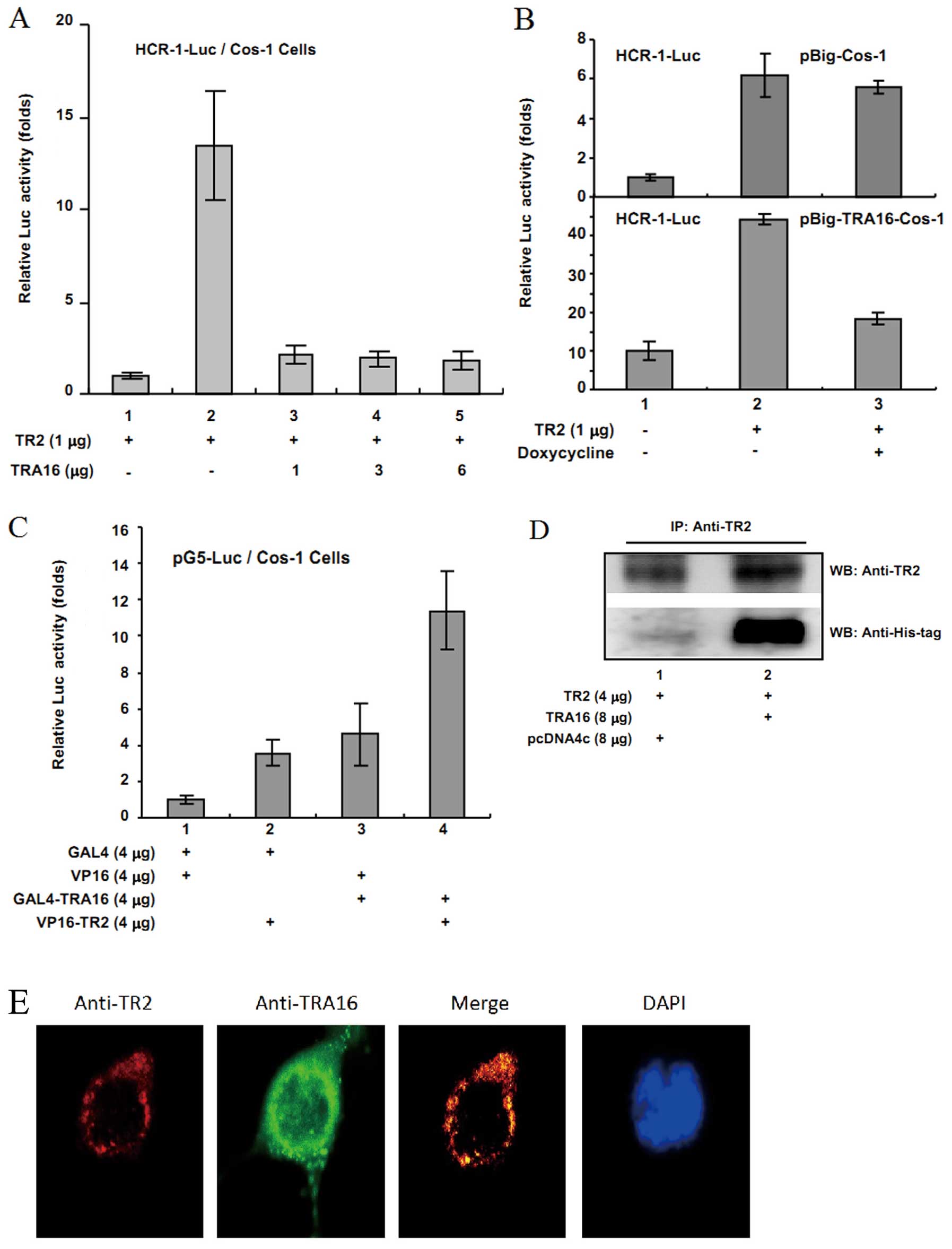|
1
|
Siegel R, Ward E, Brawley O and Jemal A:
Global Cancer Statistics, 2011 The impact of eliminating
socioeconomic and racial disparities on premature cancer deaths. CA
Cancer J Clin. 61:212–236. 2011. View Article : Google Scholar : PubMed/NCBI
|
|
2
|
Kawai H, Ishii A, Washiya K, Konno T, Kon
H, Yamaya C, Ono I, Minamiya Y and Ogawa J: Estrogen receptor α and
β are prognostic factors in non-small cell lung cancer. Clin Cancer
Res. 11:5084–5089. 2005.
|
|
3
|
Schwartz AG, Prysak GM, Murphy V, Lonardo
F, Pass H, Schwartz J and Brooks S: Nuclear estrogen receptor β in
lung cancer: expression and survival differences by sex. Clin
Cancer Res. 11:7280–7287. 2005.
|
|
4
|
Siegfried JM, Hershberger PA and Stabile
LP: Estrogen receptor signaling in lung cancer. Semin Oncol.
36:524–534. 2005. View Article : Google Scholar
|
|
5
|
Mollerup S, Jørgensen K, Berge G and
Haugen A: Expression of estrogen receptors α and β in human lung
tissue and cell lines. Lung Cancer. 37:153–159. 2002.
|
|
6
|
Omoto Y, Kobayashi Y, Nishida K, Tsuchiya
E, Eguchi H, Nakagawa K, Ishikawa Y, Yamori T, Iwase H, Fujii Y,
Warner M, Gustafsson JA and Hayashi S: Expression, function, and
clinical implications of the estrogen receptor β in human lung
cancers. Biochem Biophys Res Commun. 285:340–347. 2001.
|
|
7
|
Patrone C, Cassel T, Pettersscon K, Piao
Y, Piao Y, Cheng G, Ciana P, Maggi A, Warner M, Gustafsson J and
Nord M: Regulation of postnatal lung development and homeostasis by
estrogen receptor β. Mol Cell Biol. 23:8542–8552. 2003.
|
|
8
|
Niikawa H, Suzuki T, Miki Y, Suzuki S,
Nagasaki S, Akahira J, Honma S, Evans DB, Hayashi S, Kondo T and
Sasano H: Intratumoral estrogens and estrogen receptors in human
non small cell lung carcinoma. Clin Cancer Res. 14:4417–4426. 2008.
View Article : Google Scholar : PubMed/NCBI
|
|
9
|
Mah V, Seligson D, Li A, Marquez D,
Wistuba I, Elshimali Y, Fishbein M, Chia D, Pietras R and Goodglick
L: Aromatase expression predicts survival in women with early-stage
non-small cell lung cancer. Cancer Res. 21:10484–10490. 2007.
View Article : Google Scholar : PubMed/NCBI
|
|
10
|
Weinberg O, Marquez-Garban D, Fishbein M,
Goodglick L, Garban H, Dubinett S and Pietras R: Aromatase
inhibitors in human lung cancer therapy. Cancer Res.
24:11287–11291. 2005. View Article : Google Scholar : PubMed/NCBI
|
|
11
|
Stabile L, Gaither Davis A, Gubish C,
Hopkins T, Luketich J, Christie N, Finkelstein S and Siegfried J:
Human non-small cell lung tumors and cells derived from normal lung
express both estrogen receptor α and β and show biological
responses to estrogen. Cancer Res. 62:2141–2150. 2002.
|
|
12
|
Chang C, Kokontis J and Liao ST: Molecular
cloning of human and rat complementary DNA encoding androgen
receptors. Science. 240:324–326. 1988. View Article : Google Scholar : PubMed/NCBI
|
|
13
|
Evans RM: The steroid and thyroid hormone
receptor superfamily. Science. 240:889–895. 1988. View Article : Google Scholar : PubMed/NCBI
|
|
14
|
Beato M: Gene regulation by steroid
hormones. Cell. 56:335–344. 1989. View Article : Google Scholar : PubMed/NCBI
|
|
15
|
Wang LH, Tsai SY, Cook RG, Beattie WG,
Tsai MJ and O'Malley BW: Coup transcription factor is a member of
the steroid receptor superfamily. Nature. 340:163–166. 1989.
View Article : Google Scholar : PubMed/NCBI
|
|
16
|
Tsai MJ and O'Malley BW: Molecular
mechanisms of action of steroid/thyroid receptor superfamily
members. Annu Rev Biochem. 63:451–486. 1994. View Article : Google Scholar : PubMed/NCBI
|
|
17
|
Shyr CR, Hu YC, Kim E and Chang C:
Modulation of estrogen receptor-mediated transactivation by orphan
receptor TR4 in MCF-7 cells. J Biol Chem. 277:14622–14628. 2002.
View Article : Google Scholar : PubMed/NCBI
|
|
18
|
Yang Y, Wang X, Dong T, Kim E, Lin WJ and
Chang C: Identification of a novel testicular orphan
receptor-4(TR4)-associated protein as repressor for the selective
suppression of TR4-mediated transactivation. J Biol Chem.
278:7709–7717. 2003. View Article : Google Scholar : PubMed/NCBI
|
|
19
|
Shyr CR, Kang HY, Tsai MY, Liu NC, Ku PY,
Huang KE and Chang C: Roles of testicular orphan nuclear receptors
2 and 4 in early embryonic development and embryonic stem cells.
Endocrinology. 150:2454–2462. 2009. View Article : Google Scholar : PubMed/NCBI
|
|
20
|
Hu YC, Shyr CR, Che W, Mux M, Kim E and
Chang C: Suppression of estrogen receptor-mediated transcription
and cell growth by interaction with TR2 orphan receptor. J Biol
Chem. 277:33571–33579. 2002. View Article : Google Scholar : PubMed/NCBI
|
|
21
|
Kononen J, Bubendorf L, Kallionimeni A,
Barlund M, Schraml P, Leighton S, Torhorst J, Mihatsch MJ, Sauter G
and Kallioniemi OP: Tissue microarrays for high-throughput
molecular profiling of tumor specimens. Nat Med. 4:844–847. 1998.
View Article : Google Scholar : PubMed/NCBI
|
|
22
|
Zheng QF, Dong B, Sun Y, Du H, Xiong HC,
Wu N, Chen JF, Sun L, Ao J, Li JY, Ji JF and Yang Y: Expression of
TR4-associated protein in non-small cell lung cancer. Beijing
Daxuexue Bao. 39:472–475. 2007.(in Chinese).
|
|
23
|
Schneider J, Velcovsky HG, Morr H, Katz N,
Neu K and Eigenbrodt E: Comparison of the tumor markers tumor
M2-PK, CEA, CYFRA 21-1, NSE and SCC in the diagnosis of lung
cancer. Anticancer Res. 20:5053–5058. 2000.PubMed/NCBI
|
|
24
|
Salgia R, Harpole D, Herndon JE II, Pisick
E, Elias A and Skarin AT: Role of serum tumor markers CA 125 and
CEA in non-small cell lung cancer. Anticancer Res. 21:1241–1246.
2001.PubMed/NCBI
|
|
25
|
Iggo R, Gatter K, Bartek J, Lane D and
Harris AL: Increased expression of mutant forms of p53 oncogene in
primary lung cancer. Lancet. 335:675–679. 1990. View Article : Google Scholar : PubMed/NCBI
|
|
26
|
Mulshine JL and Sullivan DC: Clinical
practice. Lung cancer screening. N Engl J Med. 352:2714–2720. 2005.
View Article : Google Scholar : PubMed/NCBI
|
|
27
|
Ishibashi H, Suzuki T, Suzuki S, Niikawa
H, Lu L, Miki Y, Moriya T, Hayashi S, Handa M, Kondo T and Sasano
H: Progesterone receptor in non-small cell lung cancer - A potent
prognostic factor and possible target for endocrine therapy. Cancer
Res. 65:6450–6458. 2005. View Article : Google Scholar : PubMed/NCBI
|
|
28
|
Beattie CW, Hansen NW and Thomas PA:
Steroid receptors in human lung cancer. Cancer Res. 45:4206–4214.
1985.PubMed/NCBI
|
|
29
|
Stabie L and Siegfried J: Estrogen
receptor pathways in lung cancer. Curr Oncol Rep. 6:259–267. 2004.
View Article : Google Scholar
|
|
30
|
Villa E, Colantoni A, Grottola A, Ferretti
I, Buttafoco P, Bertani H, De Maria ND and Manenti F: Variant
estrogen receptors and their role in liver disease. Mol Cell
Endocrinol. 193:65–69. 2002. View Article : Google Scholar : PubMed/NCBI
|
|
31
|
Hershberger P, Vasquez A, Kanterewicz B,
Land S, Siegfried J and Nichols M: Regulation of endogenous gene
expression in human non-small cell lung cancer cells by estrogen
receptor ligands. Cancer Res. 65:1598–1605. 2005. View Article : Google Scholar : PubMed/NCBI
|

















